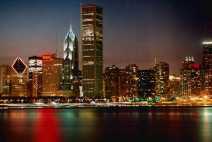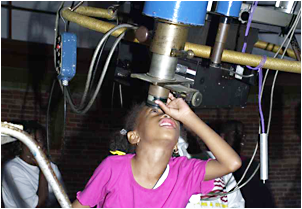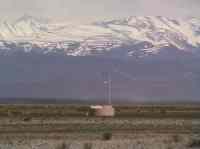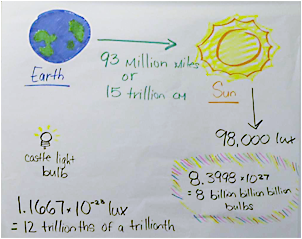 |
 |
 |
 |
 |
 |
 |
 |
 |
 |
|
KICP Workshops & Events
|
KICP Workshops, 2002 Predictions of Cold Dark Matter models on small scales: current status and future tests July 31 - August 2, 2002 | Chicago, IL, USA Website Organizers: Andrey V. Kravtsov, Angela V. Olinto, Michael S. Turner Read more >> Related Links: KICP Members: Andrey V. Kravtsov; Angela V. Olinto; Michael S. Turner Radio Waves, Yerkes Summer Institute August 3 - 9, 2002 | Yerkes Observatory in Williams Bay, WI Website | Online Materials | Photo Gallery Participants: 24 students; 9 instructors; 80 parents, siblings, and younger students Radio Waves, the theme of 2002 YSI, builds upon the investigations that the Space Explorers had conducted during the spring when they constructed old fashioned crystal radio receivers. In addition to the spring laboratory experiences, the students were provided with background materials that helped to prepare them for the institute. After introductions and an overview of the week, the institute began with a Star Party hosted by amateur astronomers. The rest of the week was spent cycling through interrelated daytime laboratories in small groups, nighttime observations, peer discussions, and deeper explorations into each laboratory. The week culminated with student presentations that engaged their parents, siblings and younger students in the experiments that they conducted during the week, and a closing ceremony where certificates of accomplishment were presented. Read more >> Related Links: KICP Members: Matthew Hedman; Randall H. Landsberg KICP Students: Ryan Hennessy; Daisuke Nagai International Workshop on Particle Physics and the Early Universe September 18 - 21, 2002 | Chicago, IL, USA  The COSMO-02 conference will be the sixth in the COSMO series (following Ambleside, Lake District, England, 1997 Asilomar, California, 1998 Trieste, Italy, 1999 Cheju Island, Korea, 2000 Rovaniemi, Finland, 2001), devoted to the interplay of particle physics and cosmology of the early universe. These conferences have been successful in bringing together particle physicists, cosmologists and astrophysicists and providing the format to discuss new results in the exciting and fast-moving field of particle astrophysics and cosmology. Related Links: KICP Members: Sean M. Carroll Auger Event Reconstruction Workshop October 2 - 5, 2002 | Chicago, IL, USA Website Organizer: James W. Cronin The Engineering Array of the Pierre Auger Observatory has been operating in steady fashion since January, 2002. It consists of 30 surface detectors overlooked by two fluorescence telescopes. During this period samples of all the types of events that we expect to observe have been found and many independent groups have begun to reconstruct them. These include events at zenith angles up to 85 deg, fluorescence events, and hybrid events seen both by the surface array and the fluorescence detector. The purpose of the workshop is to have well defined sets of events reconstructed by at least two independent teams. In addition, we want to compare different calibration techniques for the the surface detectors and the fluorescence telescopes. Finally, we want to compare simulations required to pass from observed signals in the detectors to energies. Read more >> Related Links: KICP Members: James W. Cronin Scientific projects: Pierre Auger Observatory (AUGER) Scaling Up, Yerkes Winter Institute December 27 - 29, 2002 | Yerkes Observatory in Williams Bay, WI Website | Online Materials | Photo Gallery The CfCP Yerkes Winter Institute is a three-day immersion program that allows middle- and high-school students to explore a scientific theme in depth under the guidance of Center researchers and educators. The theme for 2002 was Scaling Up, which encouraged the students to question how astrophysicists extrapolate simple measurements to understand the universe and its cosmic proportions. In the three daytime laboratories, students investigated everyday objects (balloons, sugar cubes, and light bulbs) and extended their results to more substantial things (the TopHat telescope, the 90-foot dome for the great refractor, and the sun itself). The students were divided into three groups that rotated among the daytime experiments, made nighttime observations, and shared their investigations with parents, siblings, and younger students who joined us at the end of the institute. Read more >> Related Links: KICP Members: Juan I. Collar; Randall H. Landsberg; Jonathan L. Rosner KICP Students: Andrew Puckett |








 Overview
Overview